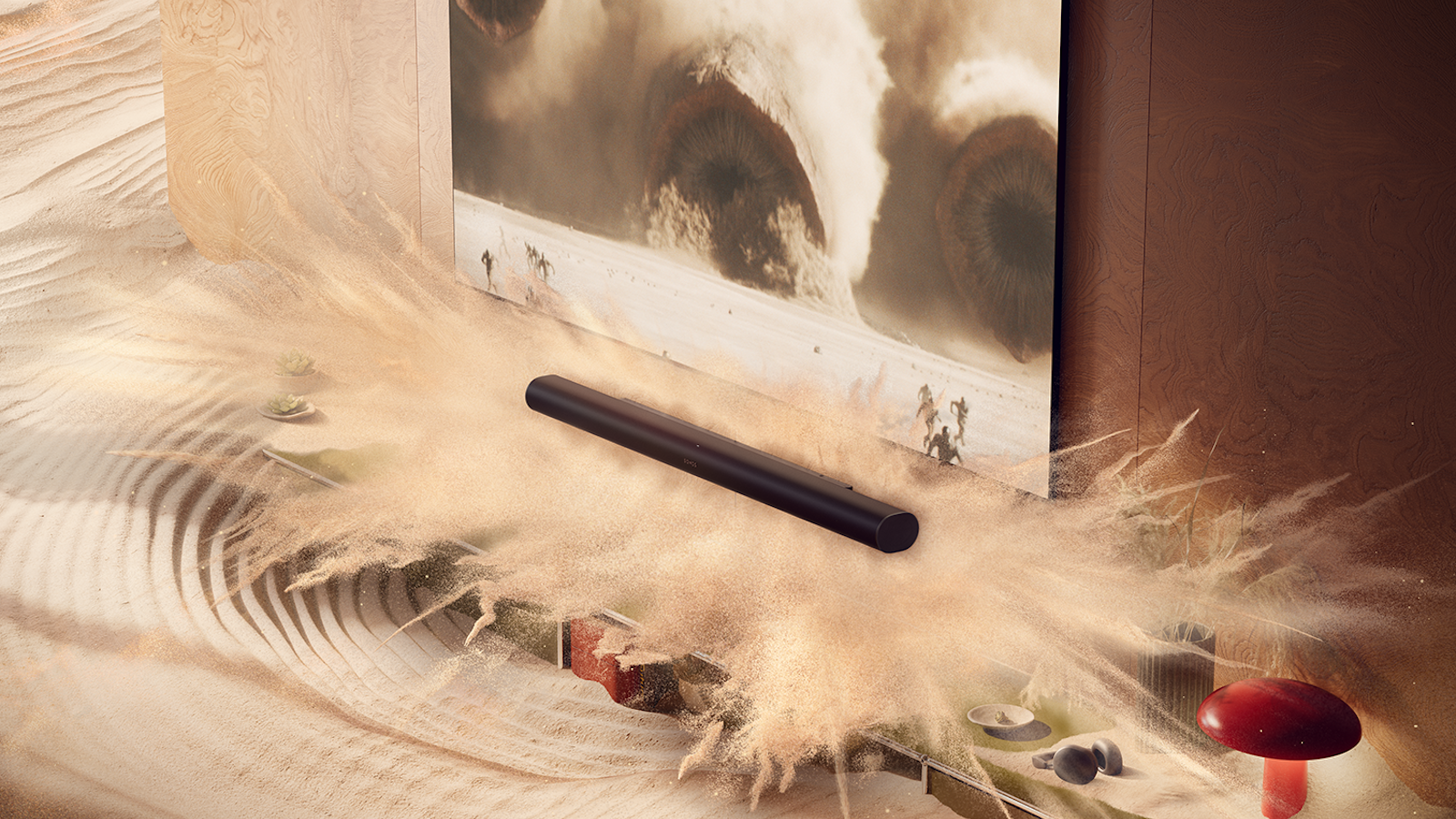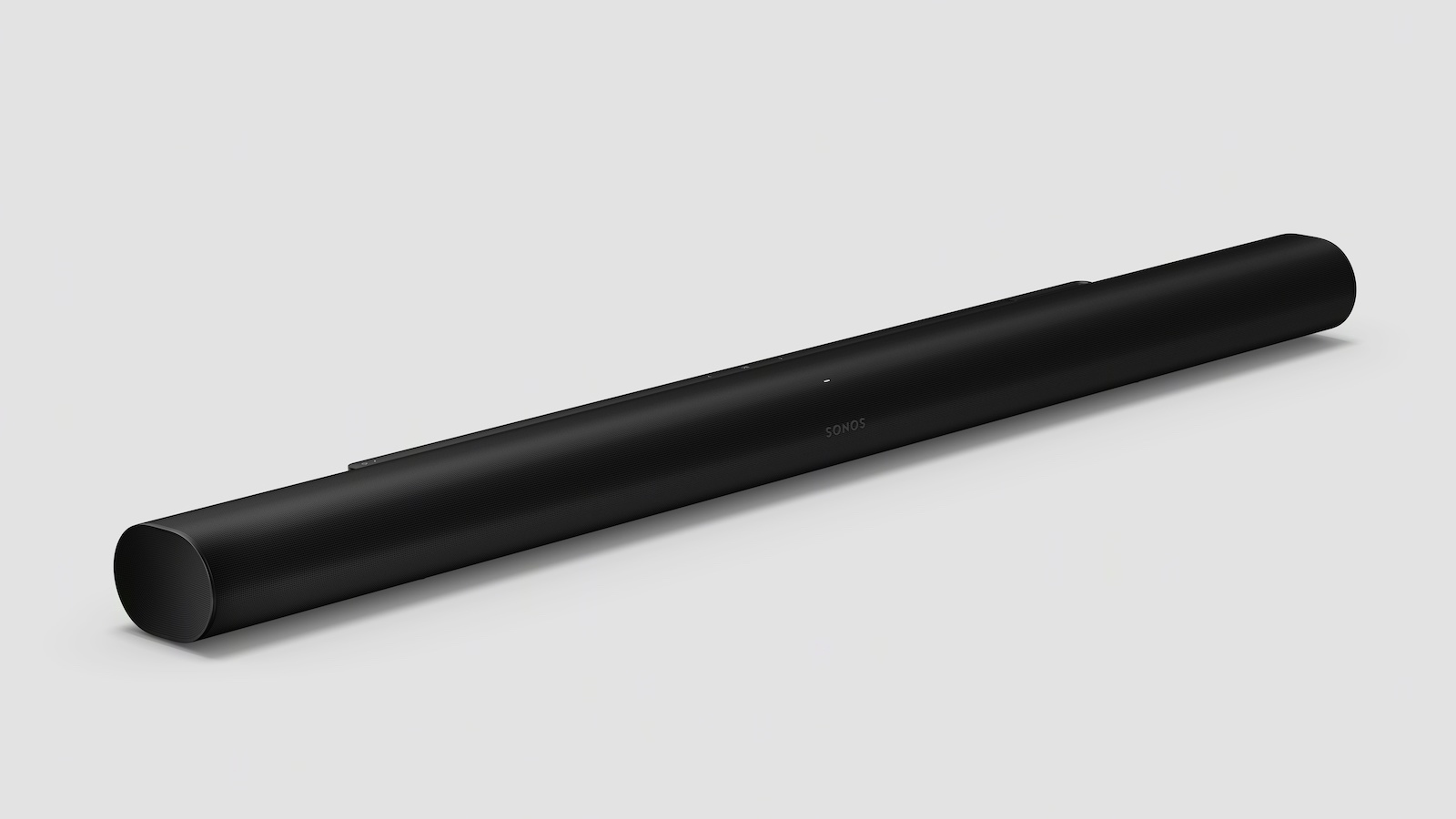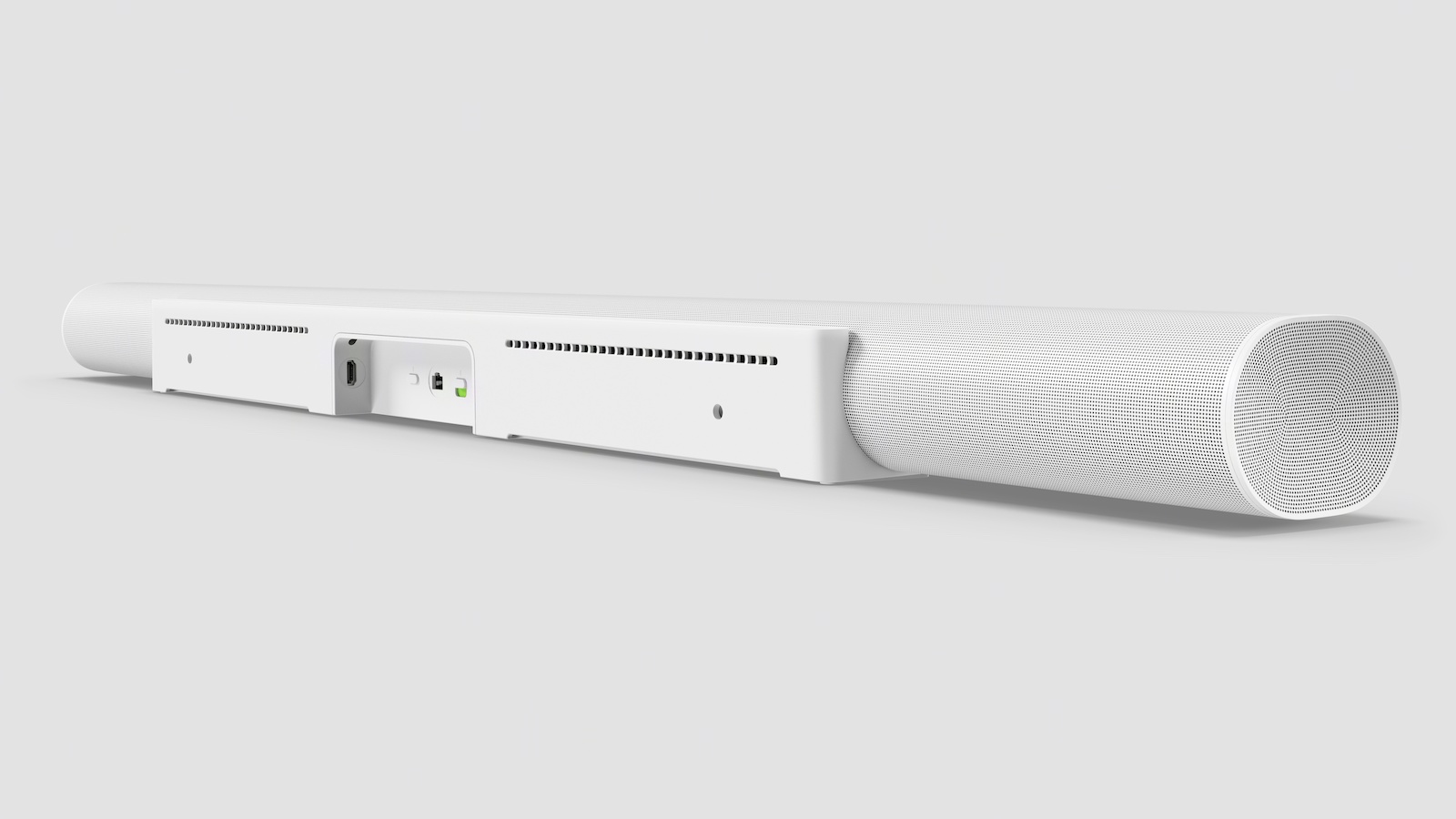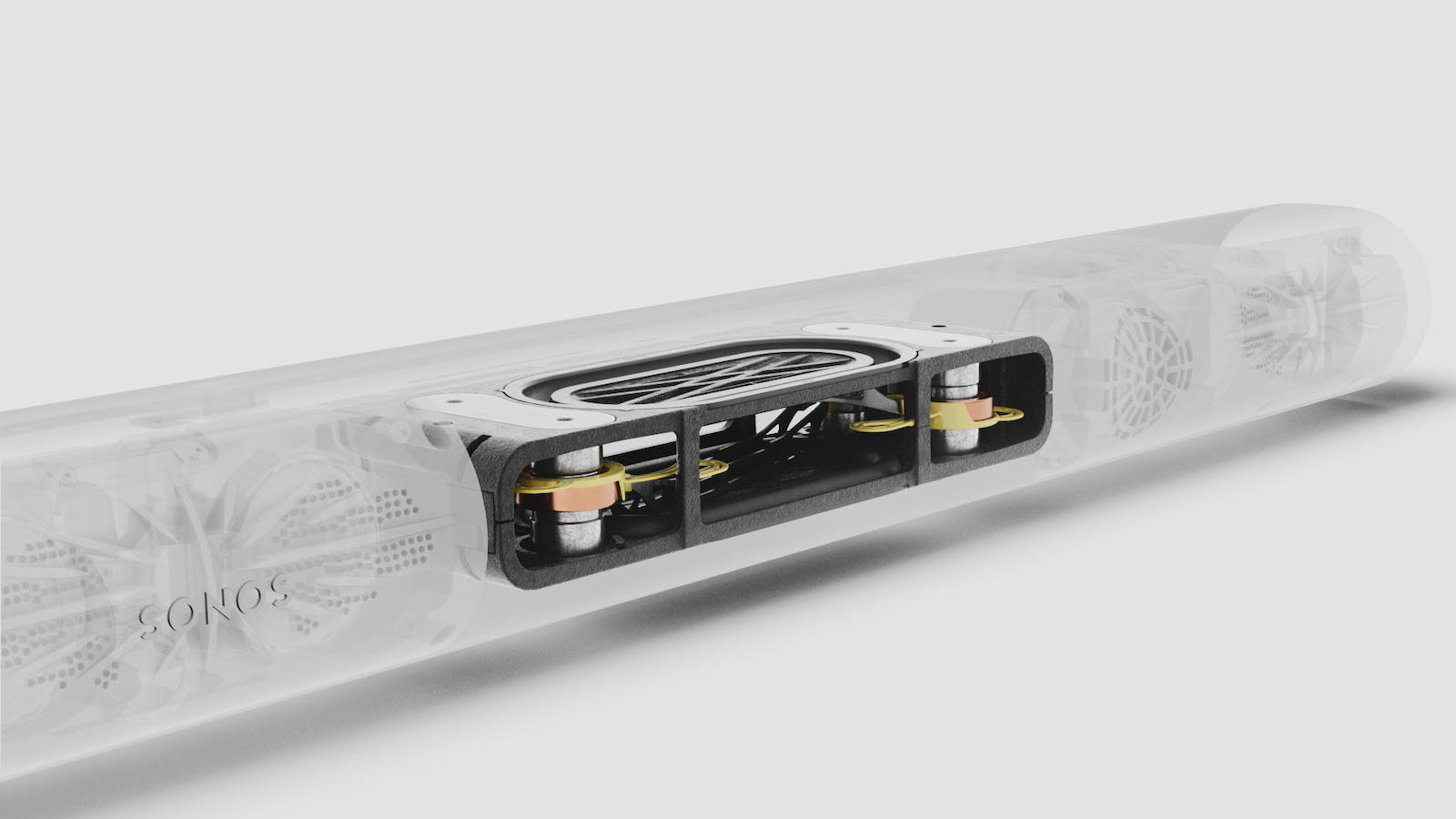
After months (if not years) of speculation, the replacement for the Sonos Arc has finally been revealed. The Sonos Arc Ultra (aka the Sonos Arc 2) looks very much like its predecessor, but Sonos has some very bold claims for its features and performance, saying that it features 'breakthrough Sound Motion technology' and 'up to double the bass' of the original Arc.
Can the new, flagship Dolby Atmos soundbar from Sonos live up to those claims? We will need to wait until we can get it into our dedicated test rooms for comprehensive, comparative testing before we can deliver that verdict. In the meantime, though, let's dig into all of the details of the Sonos Arc Ultra.
Sonos Arc Ultra release date and price

- More expensive than the outgoing Arc
- Available from 29th October
The Sonos Arc Ultra's launch price is £999 / $999 / AU$1799. It's available to pre-order now, with deliveries taking place from 29th October 2024.
That makes the Arc Ultra £100 / $100 / AU$300 more expensive than the official price of the original Arc, but it's worth mentioning that you can currently get the older model with some very large discounts as retailers look to shift excess stock ahead of the arrival of the new Arc Ultra.
There are plenty of rivals that should also be considered, most notably the Award-winning Sony Bravia Theatre Bar 9, which is a fair bit more expensive (£1399 / $1400 / AU$1795). The Samsung HW-Q990D is a new favourite in this category, too. Again, it's a fair bit more expensive than the Arc Ultra, at £1499 / $1400 / AU$1999, but it comes with a wireless subwoofer and wireless surrounds in the box, whereas adding those to the Sonos model more than doubles its price.
Design

- Wider but slightly less tall than the Arc
- Very similar overall design
- Available in black or white
At first glance, it's quite hard to tell the Arc Ultra from the original Arc, but there are some differences in the design, most notably the 'ledge' at the back of the top of the chassis. This houses the touch controls that were integrated into the main grille of the original Arc.
The dimensions of the Arc Ultra are also subtly different to those of the original Arc: it's a little wider (118cm to 114cm), but it's slightly less tall, too (7.5cm to 8.7cm), making it less likely to obstruct the bottom of your TV's screen if the 'bar is placed in front. Those who are going to wall-mount the soundbar might be pleased to learn that it's also about 350g lighter than the outgoing model.
As with the original Arc, the Arc Ultra is pretty much all grille, with just a Sonos logo and glowing status light breaking up the appearance from the front. This is of course deliberate – by perforating pretty much the entire chassis, Sonos has ensured that sound can emanate from the soundbar in almost any direction.
On that subject, the Arc Ultra will not work properly in a nook or on a shelf with another above it, as this will block the sound emanating from the upper portion of the soundbar.
Features

- Dolby Atmos but no DTS:X
- Bluetooth, which was missing from the Arc
- Trueplay support via Android as well as iOS
- No dedicated HDMI inputs
The biggest and potentially most important upgrades coming with the Sonos Arc Ultra are in its drivers and their configuration, but we'll save all of that for the sound section. For now, let's just say that the new model is a Dolby Atmos soundbar with more drivers than its predecessor.
Unfortunately, Sonos seemingly hasn't seen fit to add DTS:X support to this new model so, as with the original Arc, Arc Ultra owners will have to make do with Dolby Atmos as the only spatial audio format.
Another disappointment – one that will actually be more acute for many people – is that the Arc Ultra does not have any dedicated HDMI inputs. As with the original Arc, the idea is that you simply connect the soundbar to your TV using eARC, with any external sources being routed through the TV and out to the 'bar. That will be fine for most people, but it will be a real pain in the proverbial for others, particularly those with more than one high-spec gaming device and a TV with just two HDMI 2.1 sockets, as the Arc Ultra will take up one of those.
There are a couple of little upgrades, though: unlike the original Arc, the Arc Ultra supports Bluetooth; and, in a Sonos first, the Trueplay calibration process is supported on Android as well as iOS phones – though the company hasn't confirmed which specific handsets are compatible.
As you would expect, the Arc Ultra can be controlled via the Sonos app, your TV's remote control, the touch controls on the soundbar itself, or your voice. The app also gives you access to EQ controls and features such as Night mode, which reduces dynamics and bass so that the sound travels less readily between rooms, and Speech Enhancement, which now has different levels so that you can control to what degree the dialogue is projected.
While the Arc Ultra has more drivers than the original Arc, Sonos would of course be delighted if you added more through the addition of wireless surrounds and/or subwoofers. The soundbar is designed to work best with a pair of Era 300 speakers and the new Sub 4, but it's worth remembering that such a setup will set you back £2426 / $2426 / AU$4136 – and that's with the package discount.
The Arc Ultra is also compatible with the Sonos Ace headphones so that you can instantly switch the sound output from the 'bar to the cans. In this configuration, the headphones support spatial audio and dynamic head tracking.
Sound
- 9.1.4-channel configuration, up from 5.0.2
- 'Revolutionary' Sound Motion technology
- 'Double the bass compared to Arc'
We haven't yet heard the Sonos Arc Ultra, but it contains within it some very interesting new technology that is well worth digging into. First, though, the basics, such as they are.
The Arc Ultra boasts a 9.1.4-channel configuration, up from the 5.0.2 arrangement of the original Arc. There are 15 Class D amplifiers powering 14 drivers that are all Sonos-engineered. There are seven tweeters, six mid-range woofers, and a 'Sound Motion' woofer, and it's the last of those that's the really big deal.
A typical speaker driver has one, heavy motor, but a Sound Motion driver has four smaller, lightweight motors in opposing corners. Working together, these motors are apparently able to push the cone to shift far more air and produce far more bass. Sonos specifically claims that the Arc Ultra can produce double the bass of the original Arc and 'more balanced sound all around'. The Sound Motion driver also features dual cones that move in opposite directions to create a force-cancelling effect that apparently 'eliminates mechanical vibration'.
Sonos says Sound Motion drivers can be three times smaller than standard drivers and yet more powerful, and it's clearly very excited by the possibilities they afford. This 'opens a new chapter in sound innovation where bigger, better sound can be delivered from smaller products', it boldly proclaims, while teasing that it 'looks forward to introducing more innovative products with sound motion in the future’.
For what it's worth, Sonos actually acquired this technology when it bought Dutch audio start-up Mayht in 2022, but that's a story for perhaps another day.
While the Sound Motion driver is without a doubt the star of the show, there's also a new front-firing speaker array that apparently improves the centre channel performance to 'deliver crisp dialogue'. Sonos also says that the front soundstage is further improved through the addition of what Sonos calls 'custom colinear waveguides' on the left, centre and right, and there are of course up-firing and side-firing drivers that bounce sound off the walls of your room to deliver that Dolby Atmos effect, which Sonos says is significantly improved for this new model. In fact, it says it delivers 'Dolby Atmos like never before', which seems a very bold claim in a world in which Dolby Cinema exists, but there you go.
Early verdict
Sonos claims that its new Sound Motion technology is 'one of the most significant breakthroughs in transducer technology in nearly 100 years'. The Arc Ultra doesn't have to be amazing for that claim to be true, but Sonos will of course look a bit daft if its new, pioneering soundbar sounds poor.
Sonos' track record suggests that it knows plenty about what good sound is, so we've high hopes for the new Arc Ultra. In theory, we're looking at a soundbar with meatier, deeper bass, clearer dialogue and more convincing Dolby Atmos than the original Arc. Considering the original Arc is still one of the best performance-per-pound soundbars you can buy, that sounds like a recipe for excellence.
Of course, marketing claims and actual sound quality rarely align, and we haven't heard the Arc Ultra in any capacity at this stage, let alone in our test rooms, so we're not offering any appraisal of its performance right now. There's also the big question of how it will perform from a usability standpoint, given all of Sonos' recent app issues. We expect to get our hands on a sample for comprehensive, comparative testing very soon, though, so stay tuned for our full review around that 29th October launch date.
MORE:
Looking to test your soundbar or system? These are the best Dolby Atmos test scenes
The soundbars to beat: check out our reviews of the Sony Bravia Theatre Bar 9 and the Samsung HW-Q990D, and our guide to the best Dolby Atmos soundbars available right now







